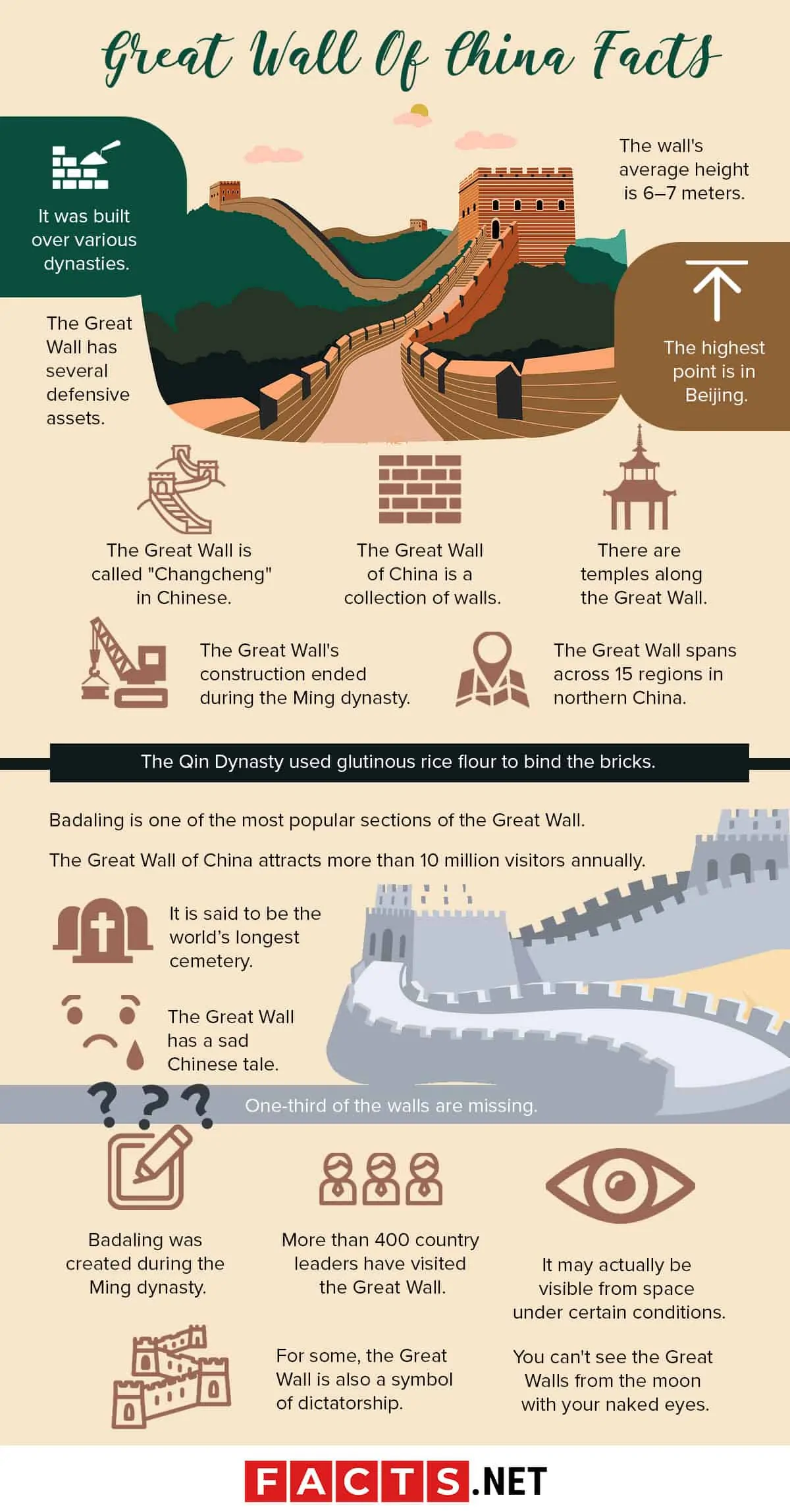The Great Wall of China, an imposing edifice stretching over 13,000 miles, stands as a testament to human ingenuity and fortitude. For travelers embarking on a journey to this historical wonder, understanding its significance, structure, and vibrant history is paramount. Below are essential facts that every traveler should know about the Great Wall of China.
1. A Multifaceted History
The construction of the Great Wall is not attributed to a singular dynasty. Its origins can be traced back to the 7th century BC during the Warring States period. Various dynasties, including the Qin, Han, and Ming, contributed to its extensive evolution, with each era incorporating distinct technologies and architectural styles into the structure. These historical layers add to the wall’s narrative, reflecting centuries of strategic military planning and cultural significance.
2. Architectural Diversity
The architecture of the Great Wall varies significantly across regions. From tamped earth and wood to bricks and stone, the materials and methods of construction differ according to the local climate and available resources. For instance, the Ming dynasty, which was the most prolific in wall construction, utilized bricks and stone, resulting in a more robust and enduring structure. This diversity is not just aesthetic; it embodies the adaptive strategies employed by various artisans and laborers across ages.
3. Not One Continuous Wall
Contrary to popular belief, the Great Wall is not a single, unbroken structure. Instead, it comprises various walls, trenches, and natural barriers that together create a formidable defense system. Some sections were built as barriers against invaders, while others were constructed for military surveillance. This segmented nature reveals the strategic thinking behind its development, which was based on geographical and tactical considerations of the times.
4. Length and Scale
Spanning approximately 13,171 miles, the Great Wall is one of the longest structures ever built. It traverses diverse landscapes, including deserts, mountains, and grasslands. This immense scale can be daunting; some visitors mistakenly assume they can hike the entire wall in a single trip. In reality, most tourists explore select sections, each offering unique experiences, scenery, and historical context.
5. A UNESCO World Heritage Site
In 1987, the Great Wall of China earned designation as a UNESCO World Heritage Site, acknowledging its cultural and historical magnitude. This status highlights the wall’s importance in understanding ancient Chinese civilization and architecture. Preservation efforts are ongoing to protect this immense structure from the ravages of time, weather, and tourism, making it even more crucial for visitors to respect these initiatives during their explorations.
6. The Wall’s Defensive Purpose
The primary objective of the Great Wall was defense against invasions, particularly from northern nomadic tribes. Watchtowers and beacon towers, equipped with signaling systems, allowed for rapid communication across vast distances. Each construction featured strategic points for archers and soldiers, showcasing the wall’s purpose as a military installation rather than merely a demarcated border. This functionality emphasizes the wall’s relevance in understanding China’s historical conflicts.
7. Myths and Misconceptions
Numerous myths surround the Great Wall. One popular misconception is that it is visible from space. In reality, while the wall is extensive, its size and color blend into the landscape, rendering it nearly invisible from orbit. Understanding these myths fosters a deeper appreciation for the wall’s authentic grandeur and its storied past, as well as an acknowledgment of the many narratives woven into its fabric over time.
8. The Great Wall’s Role in Popular Culture
The Great Wall has infiltrated popular culture, appearing in films, literature, and art as a symbol of strength and endurance. It has ignited the imagination of countless artists and filmmakers, showcasing not only its architectural marvel but also its historical significance. As travelers explore the wall, they can appreciate its impact on global culture and storytelling, transcending its physical form to become an icon of resilience.
9. Visitor Experiences and Accessibility
Several sections of the Great Wall cater to tourists, including Badaling, Mutianyu, and Jinshanling. Each section offers distinct experiences, ranging from well-preserved areas with modern amenities to more rugged paths requiring a bit of adventure. Badaling is the most frequented, ideal for families and those seeking convenience. In contrast, Jinshanling attracts hikers interested in a more authentic, less crowded encounter. Understanding these options enables travelers to select a section that aligns with their interests and fitness levels.
10. Conservation Challenges
Despite its grandeur, the Great Wall faces conservation challenges, including natural erosion, pollution, and the impacts of increasing tourist traffic. Various restoration projects aim to preserve its structural integrity while maintaining its historical value. Awareness of these challenges is essential for visitors, encouraging a responsible approach to tourism that emphasizes conservation and respect for this ancient heritage.
Conclusion
The Great Wall of China is more than just an impressive structure; it is a powerful symbol of China’s history, culture, and resilience. For travelers, understanding its complexities and significance enhances the experience, transforming a visit into a journey through time. By engaging with the wall’s rich narrative, visitors can forge a deeper connection with one of the world’s most extraordinary monuments.










